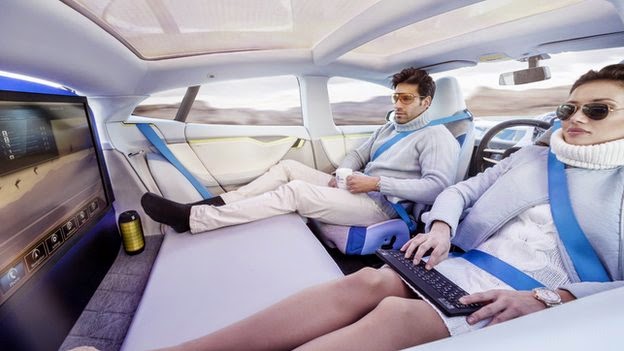It’s
a split second impulse: You whip your car into the next lane to avoid a
possible collision as cars in front of you come to a screeching halt, cutting
off the person next to you. This seemingly innocent act got you out of one
troubling situation, but into another much more precarious: The cutt-off driver
charges toward your back bumper honking his horn, flashing his lights, and
lurching at you against his front wind-shield like he wants to put his middle
finger through your teeth and out the other side. You are alarmed, but don’t
think much of it until the guy jerks into the lane next to you, and charges up alongside
your window, screaming, and trying to edge you either off the road or into
another car.
You
stop your vehicle and pull over toward the side of the road, and the guy races
ahead about 200 feet—before hurtling the half-ton up onto the curb, pulling a
u-turn, and screaming back at you with the all the fury of hell. This time you
don’t know what to do: You’re heart is pounding and shots of cortisol are
erupting into your brain causing you to lose focus, attention, and rationality.
You are under attack; the aggressor is blind with rage; you feel like you might
die.
What do you do now?
Road
rage is a serious and troubling occurrence, and often marked by the victim
being chased, cut off, and the vehicle being hit by the aggressor’s vehicle.
The most tragic side of road rage is what follows when the victim decides
unwittingly to get out of the vehicle to ‘settle matters’ with the aggressor,
which often results in physical harm, and, in extreme cases, even death.
So
what do you do to avoid becoming (or worse yet are) a victim of road rage? The
following are some simple tips to help you:
· 1. Take road rage seriously: When it happens, do not
underestimate the rage of the aggressor, or what he/she is capable of. Don’t
mess with them or provoke them or somehow try to assert some foggy sense of
self-appointed justice. Treat every incident as potentially highly dangerous
and explosive.
· 2. Disengage: Do whatever you can
reasonably to avoid this conflict: smile, wave, mouth the statement “I’m
sorry,” etc. Acting in such a way can diffuse the situation by showing the
other person that you are only human, and that you made a mistake without any
intent to offend.
· 3. Steer Clear: If you are being pursued, put
as much distance as possible between you and the aggressor, and get out of the
way as quickly as possible. Do not try to pull over on the side of the road to
settle things “man to man.”
· 4. Avoid Eye Contact: Looking and staring another
driver can be perceived as an act of aggression, and thus will only add
gasoline to the flames. Look away, focus on the road, and get your breathing
slowed down, which will help you calm down.
· 5. Get Help—Fast!: If you believe the other driver is following you, or
is literally pounding fists of fury against your window and spattering
saliva-threats against the glass, do not
get out of the vehicle. If you
have a mobile phone, call the police immediately. Otherwise, drive to a place
where there are people around, such as a mall parking lot, police station, or
even a hospital. When you arrive, honk your horn relentlessly—this will
possibly deter the aggressor from continuing his onslaught, as well as put you
in a more protected situation.
Road
rage is serious. Our world is a place full of speed and stress. The slightest
thing can trigger an explosive situation. Slow your pace down, signal when
turning lanes, check blind spots, and have a mannerly posture, letting others
into lanes and even have a parking spot if you and another vehicle roll up to
it at the same time. Most importantly, have patience.
We are all humans, and
for the most part do not willingly want to do harm to another. Remembering that
is important for both aggressor and victim.













